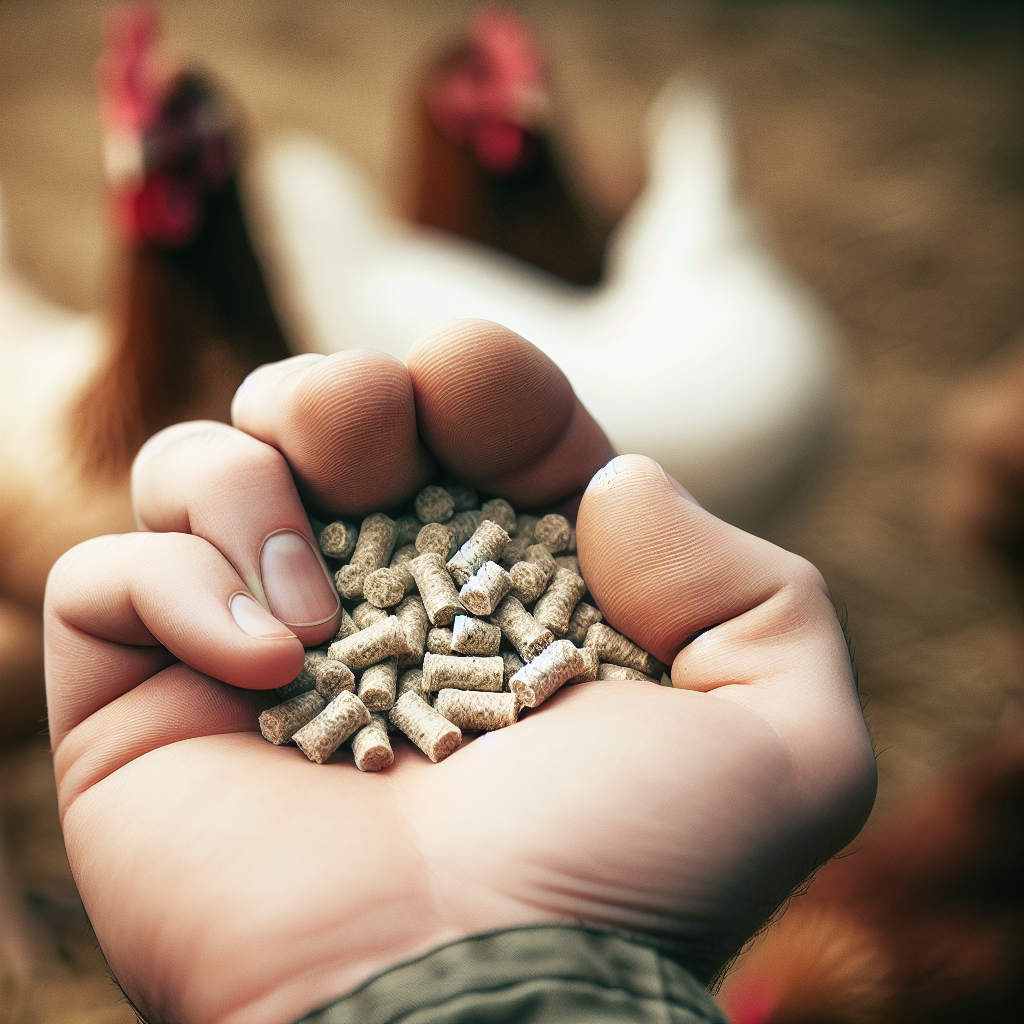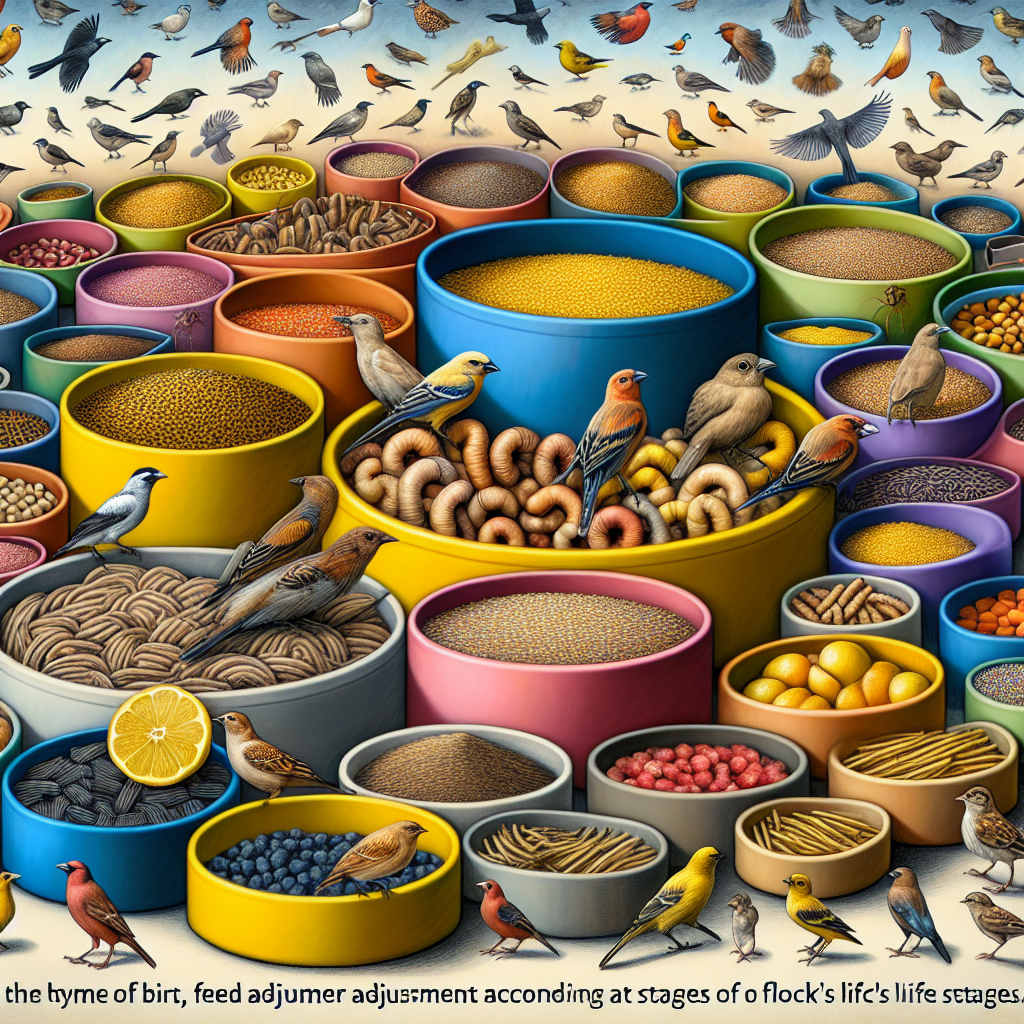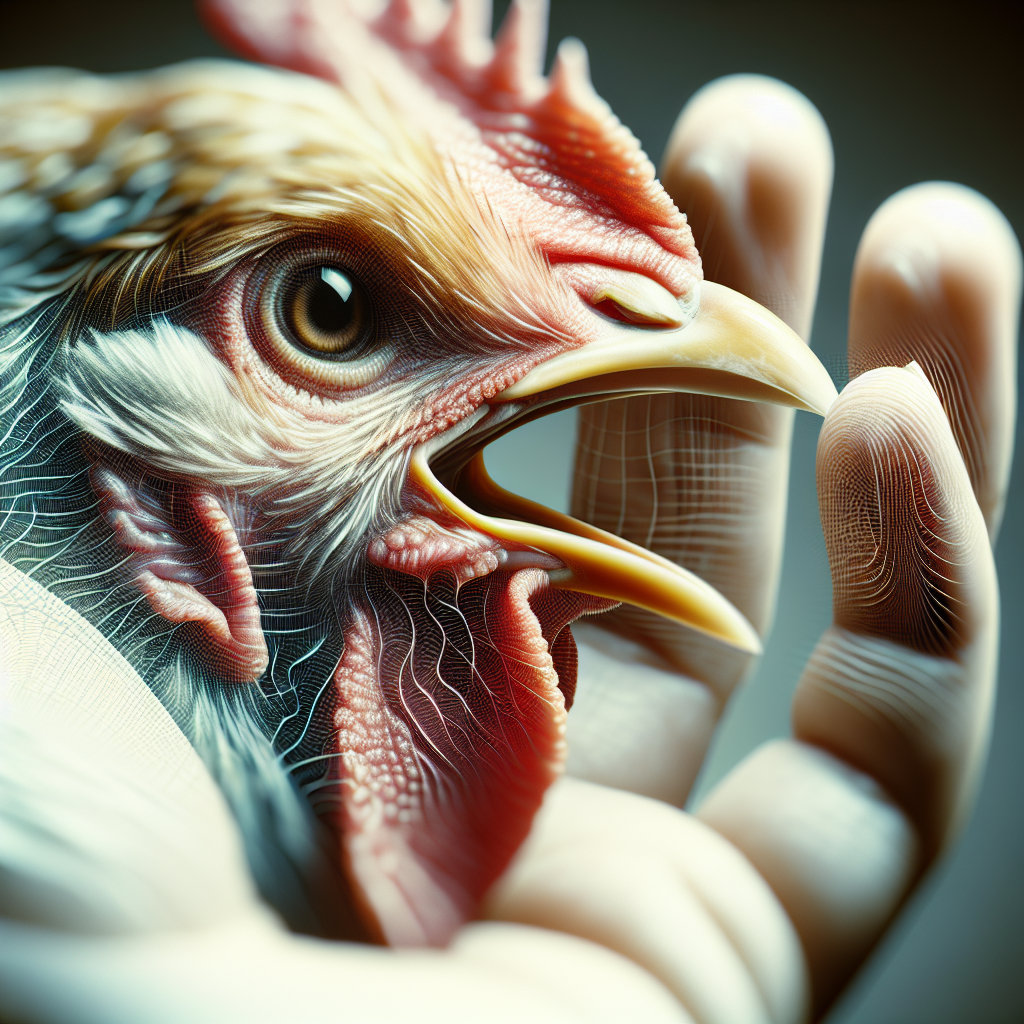When it comes to transitioning feed types for chickens, the question arises: should there be a transition period? Changing a chicken’s diet abruptly can have negative consequences on their health and overall well-being. Just as humans may experience digestive issues when introducing new foods, chickens can also face challenges when their feed is suddenly altered. Therefore, it is crucial to consider the importance of a transition period to ensure a smooth change from one feed type to another, promoting the optimal health and productivity of these feathered friends.
Introduction
When it comes to the welfare and health of chickens, ensuring a smooth transition in their feed is crucial. Switching their diet abruptly can have negative consequences on their digestion, nutrient intake, and overall well-being. In this article, we will explore the concept of feed transition, its importance, and the effects sudden feed changes can have on chickens. We will also discuss the factors to consider when planning a feed transition, the benefits of implementing a transition period, recommended strategies for a successful transition, potential risks involved, and real-life case studies. So, if you want to make an informed decision regarding feed transition for your flock, keep reading.
Understanding Feed Transition
Definition of feed transition
Feed transition, as the name suggests, refers to the process of gradually introducing a new type of feed to chickens while phasing out their previous diet. It involves changing their feed over a certain period, allowing the chickens’ digestive systems to adapt to the new nutritional composition.
Importance of feed transition
Feed transition plays a pivotal role in maintaining the health and productivity of your chickens. When chickens are given time to adapt to new feed, their digestive systems can gradually adjust to the changes, minimizing the risk of digestive disturbances. Additionally, a well-executed feed transition can help reduce stress and anxiety in chickens, ensuring a smooth adaptation to the new feed and preventing nutritional imbalances that may arise from sudden diet changes.
Effects of sudden feed changes on chickens
Sudden and drastic changes in a chicken’s diet can lead to various negative effects. Chickens have sensitive digestive systems, and abrupt feed transitions can cause digestive disturbances such as diarrhea, bloating, or even a complete shutdown of their digestive process. These disruptions can result in reduced nutrient absorption, decreased egg production, weight loss, and general unthriftiness. Consequently, it is essential to handle feed changes with caution and implement a transition period whenever possible.
Factors to Consider
Age of the chickens
The age of the chickens is a critical factor to consider when planning a feed transition. Younger chickens, such as chicks or pullets, often have more delicate digestive systems compared to mature birds. They require a carefully managed transition to avoid any adverse effects on their growth and development.
Type of feed being changed
Different types of chicken feed have varying compositions, nutritional values, and even physical characteristics. A sudden change in feed type, such as switching from a pellet to a mash or from a corn-based feed to a soy-based one, can greatly impact the chickens’ digestion. Hence, understanding the specific requirements and limitations of the new feed is crucial for a successful transition.
Health and condition of the chickens
The overall health and condition of the chickens should be taken into consideration before initiating any feed transition. Sick or immunocompromised birds may have specific dietary requirements that need to be carefully addressed during the transition period. In such cases, consulting with a veterinarian or poultry nutritionist is highly recommended to ensure the chickens’ well-being.
Current diet and nutritional needs
The nutritional composition of the chickens’ current diet is an essential aspect to consider during feed transition. Knowing the specific nutrients and levels present in the old feed will help determine how to achieve a smooth transition without causing any nutritional imbalances. It is essential to identify any deficiencies or excesses in the current diet and work towards a well-rounded new feed that caters to the chickens’ specific nutritional needs.
Benefits of a Transition Period
Minimizing digestive disturbances
Implementing a transition period between feeds allows the chickens’ digestive systems to gradually adapt to the new feed. This gradual adjustment significantly reduces the risk of digestive disturbances, such as diarrhea, constipation, or even impaction. By minimizing these issues, the overall health and well-being of the chickens are maintained.
Reducing stress and anxiety
Chickens can be sensitive creatures, and sudden changes in their environment, including their feed, can cause stress and anxiety. By providing a transition period, you create a familiar and less stressful environment for the chickens. This helps them adjust mentally and physically to the new feed, minimizing any negative impacts on their overall health.
Slow adaptation to new feed
A transition period allows chickens to slowly adapt to the new feed, both physiologically and behaviorally. This slow adaptation enables them to develop a taste and preference for the new feed while gradually accepting the change in their diet. With time, they will become accustomed to the new texture, flavor, and nutritional composition of the feed.
Preventing nutritional imbalances
Abrupt changes in a chicken’s feed can disrupt the delicate balance of nutrients in their bodies, potentially leading to nutritional deficiencies or excesses. A transition period ensures that the chickens have a chance to adjust to the new feed without compromising their nutritional needs. By gradually introducing the new feed, you can minimize the risk of any imbalances and promote optimal health and productivity.
Recommended Transition Strategies
Gradual mixing of old and new feed
One effective transition strategy is the gradual mixing of the old and new feed. Start by mixing a small portion of the new feed with the old feed, gradually increasing the proportion of the new feed over time. This gradual shift allows the chickens to adjust to the new flavors and nutritional composition without overwhelming their digestive systems.
Increasing proportion of new feed over time
Another approach is to gradually increase the proportion of the new feed in their diet over a set period. Begin by offering a small percentage of the new feed and gradually increase it every few days. This method allows the chickens to adapt to the changes slowly, giving their digestive systems ample time to adjust.
Extended transition period for sensitive chickens
Sensitive or more finicky chickens may require an extended transition period. These birds may be resistant to change and need more time to accept the new feed. By extending the transition period, you allow them to adapt at their own pace and reduce any stress or reluctance associated with the change.
Monitoring chicken behavior and health during transition
Throughout the transition period, closely monitor the behavior and health of your chickens. Keep an eye out for any signs of digestive disturbances, appetite changes, or unusual behaviors. Adjust the transition strategy if necessary and seek professional advice if any concerns arise.
Exceptions to the Transition Period
Emergency situations
In emergency situations where an immediate change in feed is necessary, a transition period may not be feasible. However, it is crucial to closely monitor the chickens’ health and behavior during and after the sudden feed change. Consulting with a veterinarian or poultry nutritionist can help mitigate any potential risks or negative effects.
Limited availability of old feed
In rare cases where the old feed becomes unavailable, a transition period may not be possible. However, a gradual introduction of a new feed, rather than an abrupt change, is still recommended. Seek advice from professionals to ensure that the new feed is nutritionally adequate and appropriate for your chickens’ needs.
Consultation with a veterinarian or poultry nutritionist
When uncertain about the necessity or execution of a feed transition, it is always advisable to consult with a veterinarian or poultry nutritionist. These professionals can provide expert guidance tailored to your specific situation, taking into account the age, health, and breed of your chickens. Their advice will help ensure a smooth and successful transition while prioritizing the well-being of your flock.
Potential Risks of a Transition Period
Extended period of improper nutrition
While a transition period is essential, it is crucial not to extend it unnecessarily. Prolonging the transition for an extended period can risk the chickens missing out on essential nutrients, potentially leading to poor growth, reduced egg production, or compromised immune function. Thus, careful monitoring of the chickens’ health and progress is crucial to achieving an appropriate transition duration.
Excessive feed wastage
During the feed transition period, chickens may exhibit selective feeding, choosing the old feed over the new feed. This can result in excessive feed wastage and an increased cost of feeding. To minimize this risk, consider physically separating the different feed options or providing separate feeding stations, ensuring that all chickens have access to the new feed.
Possible reluctance to consume new feed
Chickens can be creatures of habit, and some individuals may show reluctance to consume the new feed during the transition period. This can be due to changes in texture, taste, or smell. However, with persistent and gradual introduction, most chickens will eventually accept the new feed. If any chickens continue to show extreme reluctance, consider seeking professional advice to ensure they receive the necessary nutrition.
Case Studies
Successful transition experiences
In a case study conducted on a commercial egg-laying flock, a gradual feed transition strategy was implemented over a two-week period. The flock was slowly introduced to the new feed, with the proportion of the new feed increasing progressively. This approach resulted in minimal digestive disturbances and improved overall productivity once the transition was complete.
Challenges faced during feed transition
In another case study involving a backyard flock, a sudden feed change led to digestive issues and a significant decline in egg production. The lack of a transition period caused stress and led to a prolonged period of adjustment for the chickens. The owners learned the importance of implementing a gradual transition and sought professional advice to rectify the situation.
Lessons learned from different scenarios
These case studies highlight the importance of planning and executing a transition period when changing feed types for chickens. They demonstrate the positive outcomes of a gradual feed transition and the negative consequences of sudden changes. By learning from these experiences, we can provide our chickens with the best care and optimize their health and productivity.
Best Practices for Feed Transition
Planning ahead and acquiring new feed in advance
To ensure a successful feed transition, it is vital to plan ahead and acquire the new feed in advance. This allows you to carefully consider the specific requirements and characteristics of the new feed, ensuring a seamless transition without any disruptions in the chickens’ diet.
Observing chicken behavior and health during transition
Throughout the transition period, closely observe your chickens’ behavior and health. Look for any signs of digestive issues, reluctance to consume the new feed, or changes in egg production. By monitoring these factors, you can make timely adjustments and ensure the well-being of your flock.
Seeking professional advice when uncertain
If you are unsure about the best approach to a feed transition for your chickens, do not hesitate to seek professional advice. Consult with a veterinarian or poultry nutritionist who can provide expert guidance based on your flock’s specific needs and circumstances.
Record-keeping for future reference
It is essential to keep a record of your feed transitions and any observations made during the process. This record will serve as a valuable reference for future feed transitions or consultations with professionals. By documenting your experiences, you can continually improve your practices and ensure the best possible outcomes for your chickens.
Conclusion
In conclusion, a well-managed feed transition period is crucial for maintaining the health, productivity, and welfare of chickens. By taking into account factors such as the chickens’ age, type of feed being changed, their health and condition, and current diet, you can plan and execute a successful transition. Implementing a transition period allows the chickens’ digestive systems to adapt gradually, minimizing digestive disturbances, reducing stress, and preventing nutritional imbalances. While there may be exceptions and risks associated with a transition period, seeking professional advice and following best practices can mitigate these concerns. With proper planning, observation, and documentation, you can ensure a smooth and beneficial feed transition for your flock, promoting their overall well-being and optimized performance.




